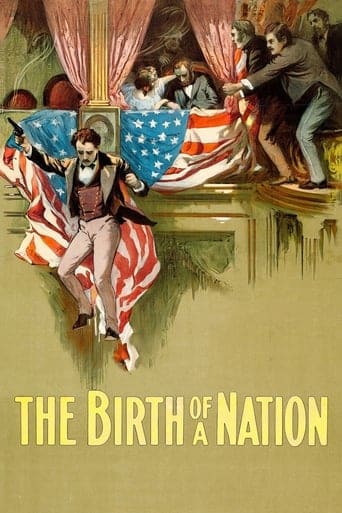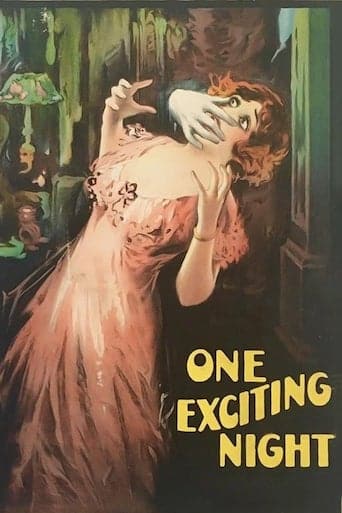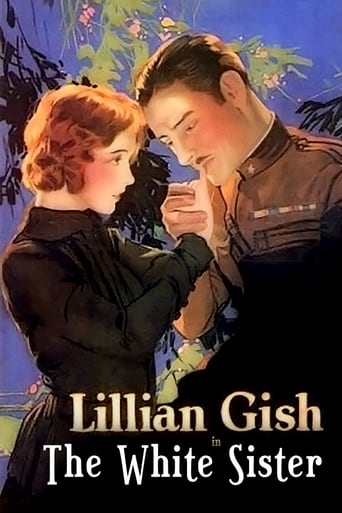The Birth of a Nation (1915)

 D.W. Griffith’s “The Birth of a Nation” stands as a cinematic landmark, both celebrated for its technical innovations and denounced for its deeply racist portrayals.
D.W. Griffith’s “The Birth of a Nation” stands as a cinematic landmark, both celebrated for its technical innovations and denounced for its deeply racist portrayals.
This silent epic, originally titled “The Clansman,” is a historic and cultural touchstone, capturing the tumultuous period of the American Civil War and Reconstruction. Spanning over three hours, the film’s impact on the industry and society is undeniable.
One of the film’s groundbreaking aspects is its technical virtuosity. Released in 1915, it was the first 12-reel non-serial American film, a monumental undertaking for its time. D.W. Griffith, alongside co-writer Frank E. Woods, adapted the screenplay from Thomas Dixon Jr.’s 1905 novel and play “The Clansman.” Griffith’s role extended beyond direction; he co-wrote the screenplay and produced the film with Harry Aitken.
“The Birth of a Nation” introduced cinematic techniques that would become standard in filmmaking. It pioneered the use of close-ups, fadeouts, and featured a musical score composed for orchestration—an innovation that enhanced the emotional impact of the narrative. The meticulously staged battle sequences, involving hundreds of extras, set a new standard for epic filmmaking.
The film unfolds against the backdrop of the Civil War and its aftermath, chronicling the fates of two families—the pro-Union Stonemans and the pro-Confederacy Camerons. The narrative explores themes of love, war, and societal upheaval. Phil Stoneman’s love for Margaret Cameron becomes a focal point, but the war and its aftermath bring tragic consequences to both families.
The film’s structure mirrors historical events, capturing the complexities of a nation torn apart. Its fictionalized account incorporates real figures such as Abraham Lincoln, portrayed by Joseph Henabery, and General Robert E. Lee, played by Howard Gaye. The narrative unfolds over several years, chronicling the pro-Union Stonemans and the pro-Confederacy Camerons as they navigate the challenges of war and Reconstruction.
However, “The Birth of a Nation” is also infamous for its deeply racist depictions and its glorification of the Ku Klux Klan. The film portrays black characters in a derogatory manner, reinforcing harmful stereotypes. Blackface performances, common during the era, further perpetuated offensive racial caricatures. The Klan is depicted as a heroic force, justifying violence against African Americans and promoting white supremacy.
The film’s divisive content has led to its characterization as “the most reprehensibly racist film in Hollywood history.” Its racist portrayal of African Americans, coupled with its celebration of the Klan, has rightfully sparked condemnation and critical analysis. The film’s success among white audiences contributed to racial tensions and influenced cultural perceptions.
Released at a time of racial tension and the rebirth of the Ku Klux Klan in the early 20th century, the film had significant real-world consequences. African Americans across the United States organized protests against its portrayal, leading to unsuccessful attempts to ban it in various locations. The film’s success and popularity among white audiences had a lasting impact, contributing to racial segregation and influencing cultural attitudes.
Despite its controversial nature, “The Birth of a Nation” cannot be dismissed from film history. It remains a cultural artifact that reflects the attitudes and biases of its time. The film’s enduring legacy lies in its role as a catalyst for dialogue on racism, representation, and the responsibilities of filmmakers in shaping public opinion.
“The Birth of a Nation” profoundly influenced both the film industry and American culture. Its success, both commercially and artistically, set new standards for epic filmmaking. However, its contribution to racial tensions and its impact on the rebirth of the Ku Klux Klan stain its legacy.
D.W. Griffith’s indignation at efforts to censor or ban the film motivated him to produce “ Intolerance” the following year, a film aimed at addressing criticisms of “The Birth of a Nation.” However, the damage was done, and the film’s association with the resurgence of the Ku Klux Klan remains a dark chapter in its historical record.
In 1992, the Library of Congress recognized the film’s cultural, historical, and aesthetic significance, preserving it in the National Film Registry. This acknowledgment underscores the complex nature of film preservation, recognizing works that have had a profound impact on American culture, even if their content is morally troubling.
“The Birth of a Nation” serves as a stark reminder of the power of cinema to shape perceptions and influence societal attitudes. Its legacy raises questions about the ethical responsibility of filmmakers and the ongoing need for critical analysis of media representations. While it remains a testament to cinematic innovation, it also serves as a cautionary tale about the potential harm that can result from unchecked prejudices in storytelling.
As audiences engage with this classic film, it is essential to approach it with a critical eye, acknowledging its historical context while challenging the harmful narratives it perpetuates. “The Birth of a Nation” remains a powerful and problematic piece of cinema, inviting reflection on the enduring impact of film on societal beliefs and the ongoing quest for racial justice.
The film features a notable cast, with Lillian Gish taking on the role of Elsie Stoneman, a central figure in the narrative. Gish, a pioneering actress of the silent film era, delivers a compelling performance despite the controversial nature of the film. Her portrayal reflects the challenges faced by actors in navigating complex and morally fraught material.
Other key cast members include Henry B. Walthall as Colonel Benjamin Cameron, Mae Marsh as Flora Cameron, and Miriam Cooper as Margaret Cameron. These actors, alongside a diverse ensemble, contributed to the film’s narrative tapestry. Their performances, while embedded in the film’s problematic context, showcase the acting prowess of the era.
“The Birth of a Nation” remains a cinematic paradox—praised for its technical achievements and condemned for its harmful depictions. Its legacy challenges contemporary audiences to confront the darker chapters of film history and consider the broader societal impact of cinematic storytelling. As discussions around representation and racial justice continue, this classic film stands as a reminder of the enduring responsibility filmmakers bear in shaping narratives that resonate through time.
Release Date: February 8th, 1915
Main Cast Members
Henry B. Walthall (Col. Ben Cameron)
Lillian Gish (Stoneman’s Daughter Elsie)
Miriam Cooper (Margaret Cameron)
Mae Marsh (Flora Cameron)
Mary Alden (Stoneman’s Housekeeper Lydia)
Ralph Lewis (Leader of the House Hon. Austin Stoneman)
George Siegmann (Lieut. Governor Silas Lynch)
Walter Long (Gus)
Joseph Henabery (Abraham Lincoln)
Josephine Crowell (Mrs. Cameron)
Spottiswoode Aitken (Dr. Cameron)
George Beranger (Wade Cameron)
Donald Crisp (Gen. U.S. Grant)
Sam De Grasse (Charles Sumner)
Wallace Reid (Jeff, the Blacksmith)




